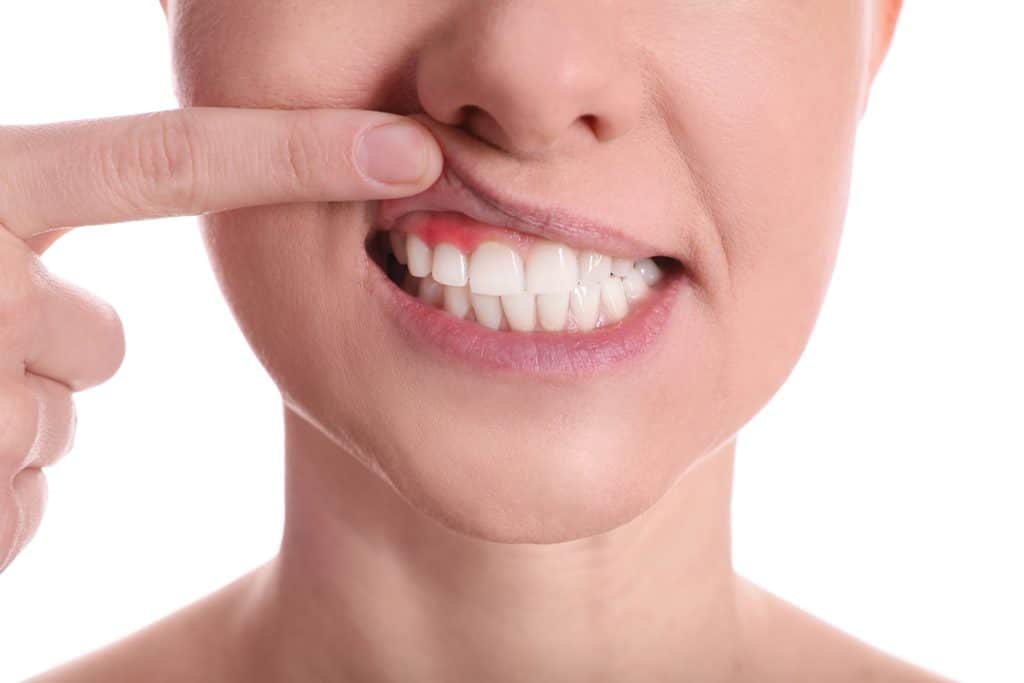Can Gum Disease Be Reversed in Its Early Stages?

Gum health plays a central role in your overall oral wellness, and many of us wonder what happens when gums start to bleed, feel tender, or look puffy. Is it too late, or can we turn things around? The good news: in its earliest stage—gingivitis—gum disease is often reversible with timely, consistent care.
In this post, we’ll explain how early gum disease develops, what it takes to reverse it, and when professional periodontal treatment becomes essential. You’ll walk away with practical steps, clear signs to watch for, and reassurance that with the right plan, your gums can recover.
Understanding Early Gum Disease: What We Can Reverse
Gum disease begins when plaque—a sticky film of bacteria—builds up along and under the gumline. When plaque isn’t removed, it hardens into tartar (calculus), which irritates the gums and triggers inflammation. This first stage is called gingivitis. At this point, your gums may bleed when you brush or floss, look red or slightly swollen, and feel tender. Bad breath is also common.
Here’s the key: gingivitis affects the gums but hasn’t yet damaged the bone supporting your teeth. That’s why it can be reversed. With consistent home care and professional cleanings, the inflammation can subside, gums can tighten around teeth again, and bleeding can stop. Once gum disease advances to periodontitis (where bone loss begins), we can manage and improve it, but we can’t fully reverse the structural changes that have occurred.
Step One: Daily Habits That Help Gums Heal
Reversing early gum disease starts at home. Even small, steady changes in your routine can make a big difference within a few weeks.
- Brush thoroughly twice a day: We recommend a soft-bristled toothbrush and gentle, circular motions for two minutes. Position the bristles at a 45-degree angle to the gumline and sweep plaque away from the gums.
- Floss once daily: Flossing removes plaque where your brush can’t reach. Curve the floss into a “C” shape around each tooth and slide it gently under the gumline. If floss is tricky to use, try floss picks or a water flosser.
- Add an antibacterial mouthrinse: An over-the-counter antiseptic rinse can reduce the bacterial load and help calm inflamed gums. Look for options with cetylpyridinium chloride or essential oils if alcohol-based rinses are too harsh.
- Mind your diet and hydration: Bacteria thrive on sugars and starches that stick to teeth. Choose balanced meals, rinse with water after snacks, and limit frequent sipping of sweet drinks.
- Replace your toothbrush every 3 months: Frayed bristles don’t clean effectively and can irritate the gums.
With consistent care, many people notice less bleeding and tenderness in 10–14 days. If bleeding persists beyond two weeks—or you see gum recession, persistent bad breath, or sensitivity—professional evaluation is the right next step.
Step Two: Professional Cleanings and Early Interventions
While home care is the foundation, we play a crucial role in reversing gingivitis and stopping early progression. During your visit, we identify plaque and tartar that can’t be removed at home and clean the areas you may miss—especially below the gumline and between teeth.
- Prophylaxis (routine dental cleaning): This removes plaque and tartar from above and just under the gumline. When paired with improved brushing and flossing, it often resolves gingivitis.
- Targeted debridement: In areas with heavier buildup, more focused tartar removal helps reduce inflammation quickly.
- Coaching on technique: We’ll review brushing and flossing methods tailored to your mouth, recommend the right tools (like interdental brushes or a water flosser), and set a schedule that supports healing.
If we detect early signs of gum pocketing (the space between the gums and teeth becoming deeper), we may suggest more frequent cleanings for a period of time. This helps us stay ahead of plaque buildup while your gums recover.
Step Three: When Early Periodontitis Appears—Control and Restore
If gum disease has moved beyond gingivitis into early periodontitis, reversal isn’t possible in the strict sense—bone that’s lost does not grow back on its own. Still, we can halt or slow disease progression and restore gum health with targeted therapy.
- Scaling and root planing (deep cleaning): We thoroughly clean below the gumline to remove plaque and tartar and smooth the tooth roots. Smoother roots make it harder for bacteria to reattach, giving gums a chance to reattach and pockets to shrink.
- Localized antimicrobials: In some cases, we place medication directly into deeper pockets to reduce bacteria and inflammation.
- Ongoing maintenance: After deep cleaning, we typically recommend periodontal maintenance visits every 3–4 months. This schedule supports stability and prevents relapse.
If pockets remain deep or bone loss is more advanced, surgical options may be considered to reduce pocket depth, regenerate tissue in select areas, or reshape the gums for easier cleaning. The earlier we act, the more conservative—and successful—your treatment can be.
How to Tell If Your Gums Are Getting Healthier
Tracking progress helps you stay motivated and spot concerns sooner. Here are signs your gums are improving:
- Bleeding decreases or stops when brushing and flossing
- Redness fades and the gumline looks pink and firm
- Tenderness and swelling diminish
- Morning breath improves
- Your dental team records reduced plaque and tartar at cleanings
- Pocket measurements (if taken) trend downward over time
On the other hand, watch for symptoms that suggest you need care soon: gums that bleed easily for more than two weeks, bad breath that won’t resolve, gum recession, teeth that feel loose, or changes in how your teeth fit together when you bite.
Practical Tips to Protect Your Gums Long-Term
Reversing gingivitis is the first win; keeping your gums healthy is the long-term goal. A few habits make a lasting difference:
- Keep your recall visits: Cleanings and exams every six months—or more often if recommended—allow us to catch changes early.
- Use the right tools: Many patients benefit from an electric toothbrush with a pressure sensor, interdental brushes for larger spaces, and a water flosser around bridges or orthodontic wires.
- Manage dry mouth: Saliva protects your gums. If you take medications that cause dry mouth, we can recommend hydrating strategies, sugar-free xylitol lozenges, and saliva substitutes.
- Don’t ignore clenching or grinding: Bruxism can stress the supporting tissues. A custom nightguard helps protect your teeth and gums.
- Support your overall health: Conditions like diabetes and habits like tobacco use raise the risk of gum disease. Good blood sugar control and quitting tobacco dramatically improve outcomes.
Bringing It All Together
So, can gum disease be reversed in its early stages? Yes—gingivitis is often reversible with diligent home care and timely professional cleanings. If early periodontitis has begun, we can still control the disease, reduce inflammation, and protect your smile with targeted therapy and regular maintenance. If you’re noticing bleeding or tenderness, let’s address it early so you can enjoy comfortable, confident oral health.
Frequently Asked Questions About Periodontal Procedures
What is scaling and root planing, and will it hurt?
Scaling and root planing is a deep cleaning that removes plaque and tartar below the gumline and smooths the root surfaces. We use local anesthetic to keep you comfortable during the procedure. Afterward, you may feel mild soreness or sensitivity for a day or two, which typically responds well to over-the-counter pain relief and warm saltwater rinses. Most patients return to normal routines the same day.
How often will I need periodontal maintenance after treatment?
After scaling and root planing or other periodontal therapy, we usually recommend maintenance visits every 3–4 months. This schedule allows us to remove any new tartar before it irritates the gums, monitor pocket depths, and adjust your home care plan. Over time, if your gums remain stable, we may lengthen the interval between visits.
We’re Davis Gribble Hollowwa Dental, a dedicated team proud to care for families across Albuquerque. If you’re noticing bleeding gums or tenderness, we’re here to help with compassionate, evidence-based care tailored to you. To schedule a visit or ask a question, please contact us.

